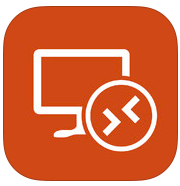Microsoft has just released a new add-on (but, they call it a Hotfix for some reason) for Windows 7 computers running SP1. The new Windows Update Cleanup installs and plugs in to the standard Windows 7 Disk Cleanup wizard maintenance utility. Once installed, Windows Update Cleanup becomes just another option you can choose in the wizard.
- The Windows Update Cleanup option is available only when the Disk Cleanup wizard detects Windows updates that you do not need on the computer.
- To enable you to roll back to previous updates, updates are stored in the WinSxS store even after they are superseded by later updates. Therefore, after you run the Disk Cleanup wizard, you may be unable to roll back to a superseded update. If you want to roll back to a superseded update that the Disk Cleanup wizard deletes, you can manually install the update.
You must have administrator permissions to clean up Windows update files.
- Start the Disk Cleanup wizard. To do this, use one of the following methods:
- Method 1: Click Start, type cleanmgr in the Start Search box, and then click OK.
- Method 2: Click Start, click All Programs, click Accessories, click System Tools, and then click Disk Cleanup.
- Method 3: If a Low Disk Space notification appears, click the notification to open the Disk Cleanup wizard.
- Select the Windows 7 system drive, and then click OK.
Note This operation might take several seconds because the Disk Cleanup wizard searches for files on the drive that can be cleaned up.
- If the Windows Update Cleanup option is not displayed on the Disk Cleanup tab, click Clean up system files. If the Windows Update Cleanup option is displayed on the Disk Cleanup tab, go to step 5.
Note The Windows Update Cleanup option is available only when you log on by using administrator permissions.
- Select the Windows 7 system drive, and then click OK.
- On the Disk Cleanup tab, select Windows Update Cleanup, and then click OK.
Note By default, the Windows Update Cleanup option is already selected.
- When a dialog box appears, click Delete Files.
To download the utility (Hotfix) from here: Windows Update Cleanup

